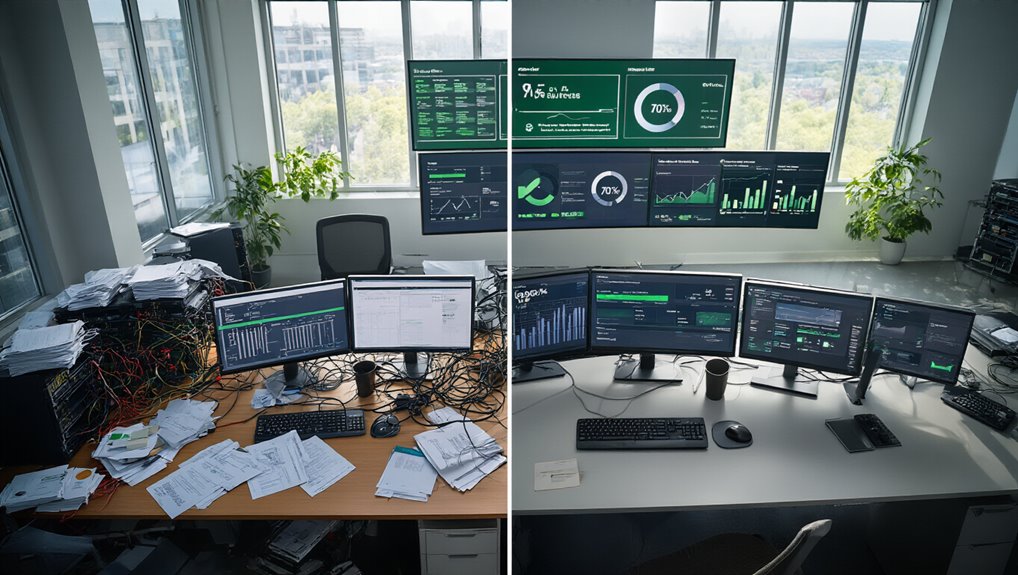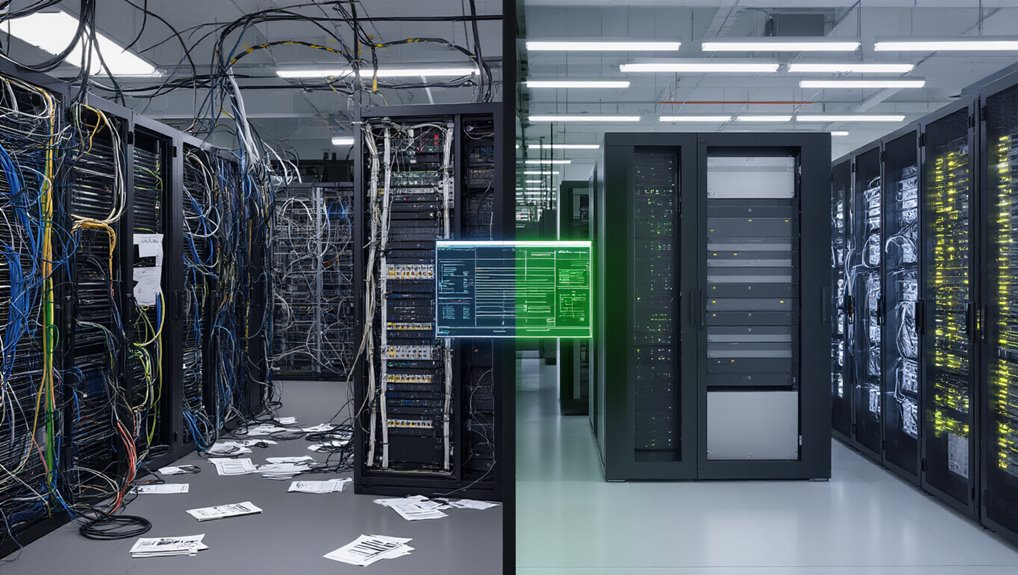While many organizations struggle with disconnected IT systems that hinder support operations, middleware has emerged as a critical solution for modern service desks. This technology bridges previously siloed systems, creating unified workflows that enable service desk agents to access real-time data across CRM, ITSM, and communication platforms. The seamless integration eliminates redundant data entry and guarantees consistent information throughout the support lifecycle.
Middleware dramatically accelerates resolution times through intelligent automation. Organizations implementing middleware-enabled automation report up to 75% faster ticket resolution. The technology automatically classifies and routes tickets based on content, priority, and required expertise. This automation extends to self-service portals, which can deflect up to 60% of routine inquiries, allowing agents to focus on complex issues that require human intervention.
Intelligent automation through middleware cuts resolution time by 75%, freeing agents to tackle complex issues while routine inquiries resolve themselves.
The data aggregation capabilities of middleware transform service desk operations through thorough analytics. Service managers gain visibility into key performance metrics such as ticket volume, resolution time, and agent utilization. These insights support data-driven decisions about staffing, training needs, and process improvements. Real-time dashboards identify bottlenecks before they impact service levels. Efficient categorization of tickets helps teams monitor incidents by category and remove bottlenecks in routing operations.
Agent productivity sees significant improvements through middleware integration. Knowledge base resources become instantly accessible during ticket handling, reducing research time and guaranteeing consistent responses. The technology optimizes workload distribution based on skills and availability, preventing burnout while maintaining service levels. Administrative tasks like reporting become automated, freeing agents for value-added work. This optimization directly contributes to maintaining the ideal 70-80% utilization rate for service desk staff, creating a balanced workload that prevents burnout.
Customer experience benefits substantially from middleware implementation. Support becomes available across multiple channels—chat, email, phone—with context preserved between interactions. This omnichannel approach meets users where they are, reducing friction and improving satisfaction. Self-service options empower users to resolve simple issues independently, with data showing nearly 10% of contacts resolved without agent interaction. Message-oriented middleware specifically enhances the customer experience through asynchronous communication that prevents system slowdowns during peak demand periods.
The cost efficiency of middleware comes from reduced manual effort, faster resolutions, and better resource utilization. By connecting disparate systems into a cohesive support ecosystem, middleware enables the digital transformation necessary for modern service delivery.





